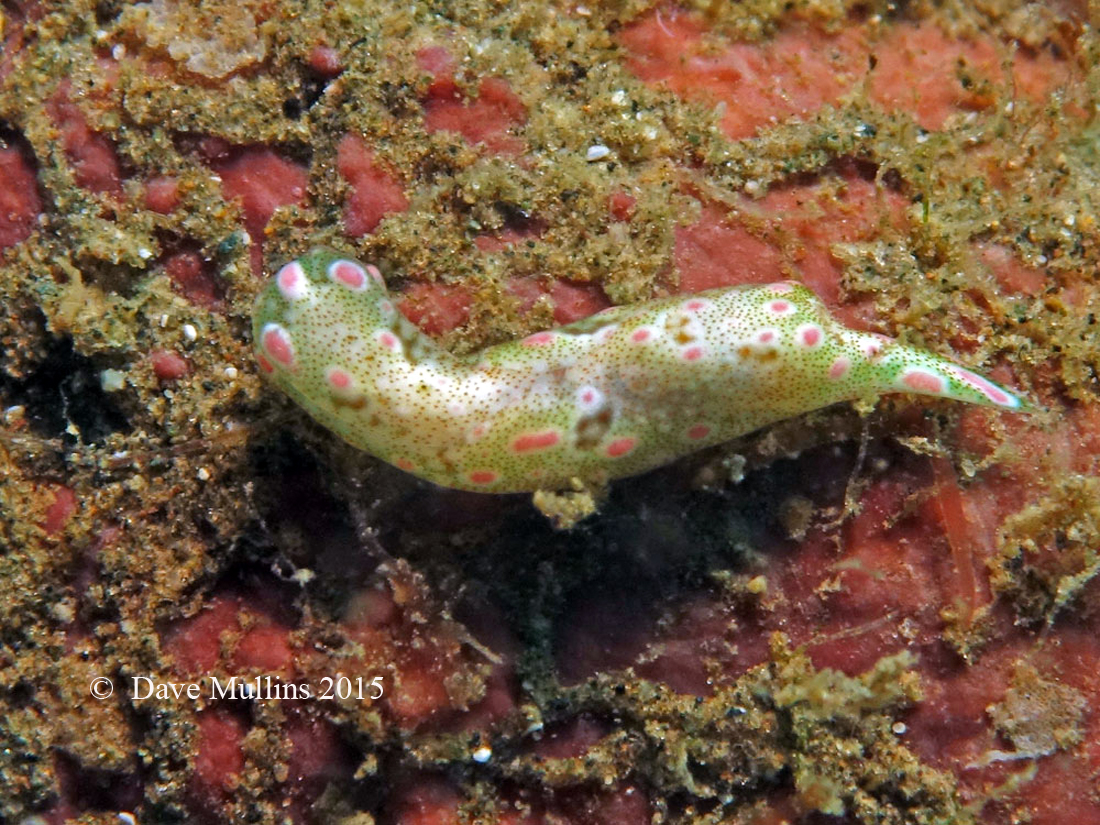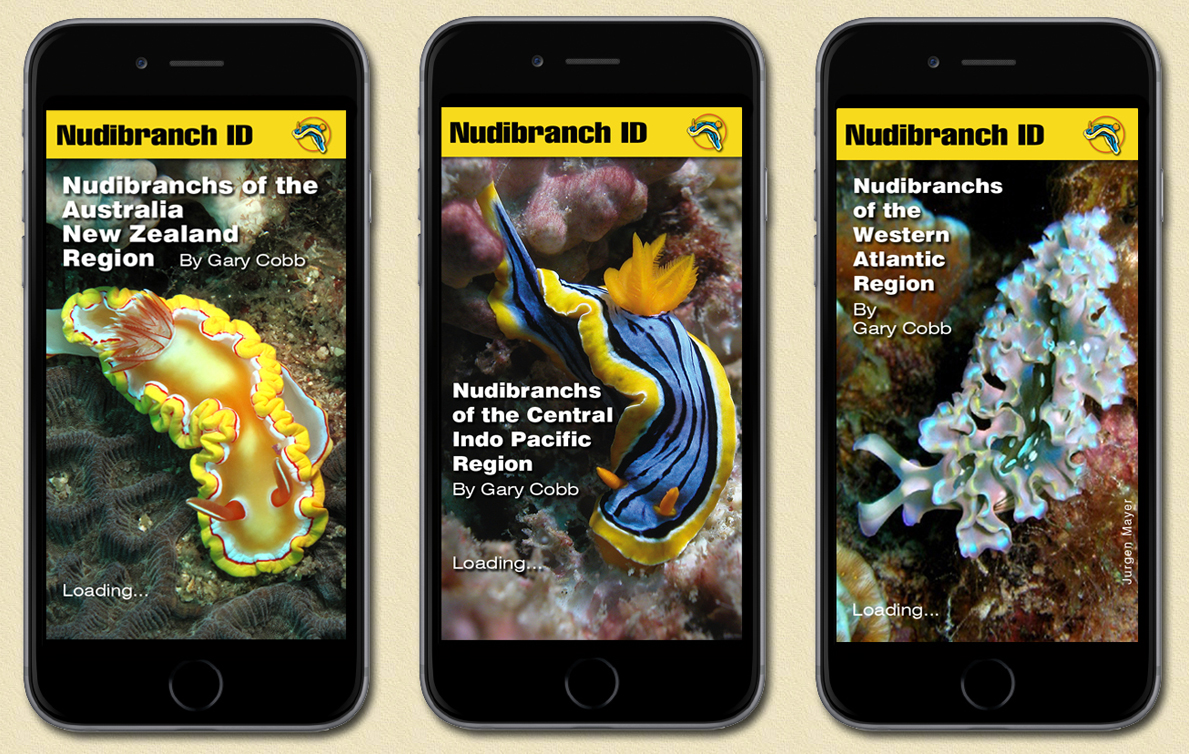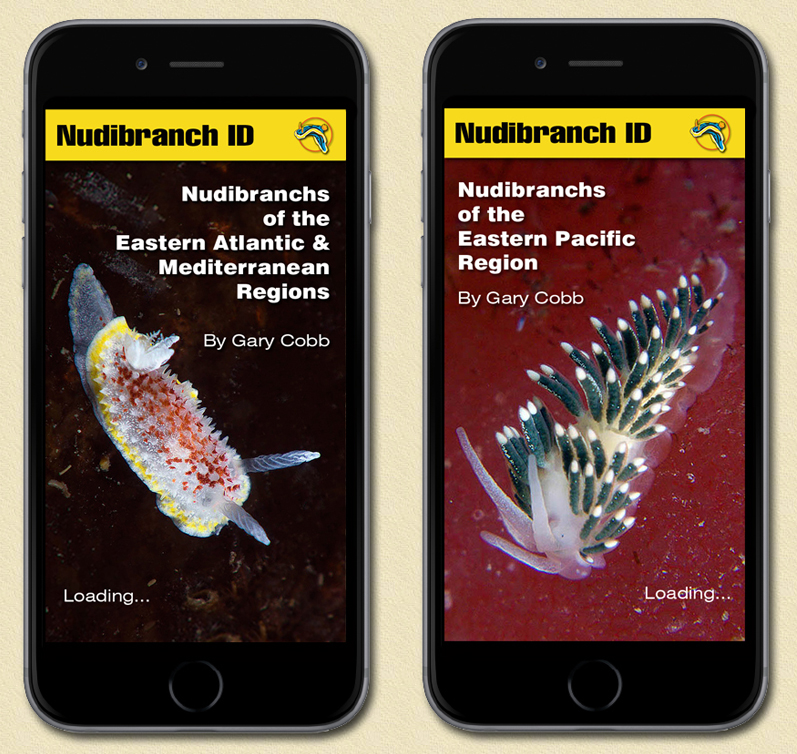 |
Odontoglaja guamensis
Image courtesy of Dave Mullins5 metres, Albatross Passage, Bismarck Sea, New Ireland, PNG
Canon G10 in Ikelite Housing with wet macro diopter, Inon Z220 strobe.
Dave Mullins on location
 | Odontoglaja guamensis Rudman, 1978 Odontoglaja guamensis is a cephalaspidean or head-shield slug belonging to the Aglajidae family. It takes a sharp or practiced eye to locate this small (to 15 mm, usually 8 - 11 mm) and cryptic species. It exhibits all of the usual Aglajidae external features - elongate narrow cylindrical body, broad tapering head-shield, well developed parapodia folding up the sides of the body and two caudal lobes (tails), one longer than the other. There are also special internal structures that have caused taxonomists to place it in this family. Odontoglaja guamensis presents with a beautiful combination of colours and pattern most noticeable under magnification. The background colour is cream with a diffusion of green or light brown that is more intense at the anterior and posterior ends. Randomly scattered over the entire animal are round or oblong pink pustules each surrounded by a white ring. Some pustules appear less well developed. Finally there is a peppering of small light brown spots distributed over the body. At certain consistent locations there are dense irregular concentrations of these brown spots producing distinctive brown markings - one pair fore and one pair aft on the headshield, one pair almost at the parapodial peaks, one pair on the posterior shield and a single mark at the base of the tail. Across its distribution there are a number of variations on this presentation. The anterior end of the headshield is rounded and extends for more than half the length of the body. The parapodia (lateral foot extensions) fold up the sides of the body to almost meet at the gap between anterior and posterior shields. The left tail is elongated however the right is almost non-existent. The white shell is reduced, thickly calcified and wholly internal. |
First discovered in Guam by Clay Carlson & Patty-Jo Hoff Odontoglaja guamensis, and the other later described Odontoglaja, are unusual in possessing radula teeth and gizzard (albeit rudimentary - ridges lined with chitin) not unlike the philinids because all of the other aglajids have evolved to lose these structures. To quote the species' author:
"... Although modern taxonomists shouldn't talk about 'missing links' this species has an interesting mixture of ancestral and 'modern' (derived) characters..."
It is a fast moving predatory sea slug epifaunally hunting polychaete worms, acoel flatworms, other sea slugs and perhaps small crustaceans such as isopods.
Bill Rudman's name for this species says it all - An aglajid with teeth, found in Guam.
References:
- Burn R. & Thompson T.E. (1998). Order Cephalaspidea Pp 943-959 in Beesley,
- P.L., Ross, G.J.B. & Wells, A. (eds) Mollusca: The Southern Synthesis. Fauna of Australia. Vol. 5. CSIRO Publishing: Melbourne, Part B.
- Gosliner, T.M., Behrens, D.W. & Valdés, A. (2008). Indo-Pacific Nudibranchs and Sea Slugs. Sea Challengers Natural History Books & California Academy of Sciences.
- Gosliner, T. M. (2011). Six new species of aglajid opisthobranch mollusks from the tropical Indo-Pacific. Zootaxa 2751: 1-24
- Marshall J. G. & Willan R. C. (1999). Nudibranchs of Heron Island, Great Barrier Reef, Backhuys Publishers.
- Rudman, W. B.,(1978).A new species and genus of the Aglajidae and the evolution of the philinacean opisthobranch molluscs. Zoological Journal of the Linnean Society, 62: 89-107.
- Rudman W. B., 1998 - 2010. Odontoglaja guamensis, Factsheet & Related Messages, Sea Slug Forum, Australian Museum, Sydney.
marineimages@hotmail.com
July 2015
Send Dave email at marineimages@hotmail.com
WEBMASTER'S NOTES: Dave has been active in underwater photography since the early 70's and is presently the Webmaster/Publisher of Insights , a web site you definitely should put on your list of sites to visit!
Nudibranch reference material comes in many shapes and sizes but primarily books and websites. The problem with reference books is outdated material and their weight when travelling. Taxonomy is changing and adding or altering names at a rapid rate. The problem with the Internet is range and accessibility.
Now, thanks to the development by and ongoing efforts of Gary Cobb there is a series of smart device applications called Nudibranch ID. When the series is complete you'll be able to reference all the nudibranchs of the world.
No web connection required.
The Nudibranch ID App Series:
These field guides will place right at your fingertips, anytime and anywhere, an outstanding selection of Nudibranchs found throughout the World.
Featuring:
Indo-Pacific - version 19.0 - 700 species (available now)
Eastern Pacific - version 16.0 - 423 species (available now)
Australia and New Zealand - version 18.0 - 1139 species (available now)
Eastern Atlantic/Mediterranean Sea - version 5.0 - 680 species (available now)
Western Atlantic - version 4.0 - 498 species (available now)
Indian Ocean/Red Sea - (out soon)
Western Pacific - (out soon).
Available as iPhone or Android versions.
These are true Apps not just simple identification guides. Search functions and the ability to create lists for emailing are game breakers in this field. They are updated (for free) regularly.
Visit: www.inudibranch.com for a full description.
 |
 |
